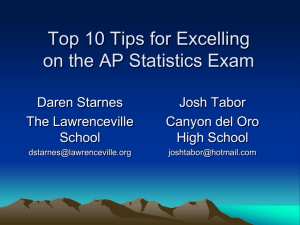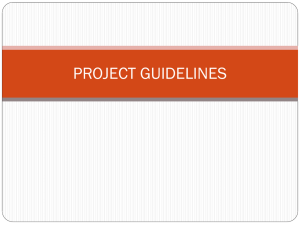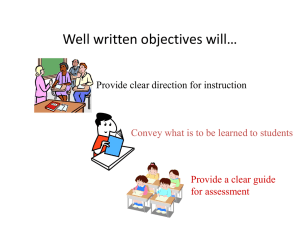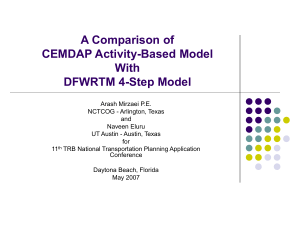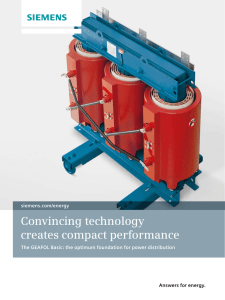Starnes AP Statistics exam tips bfw may 2012
advertisement
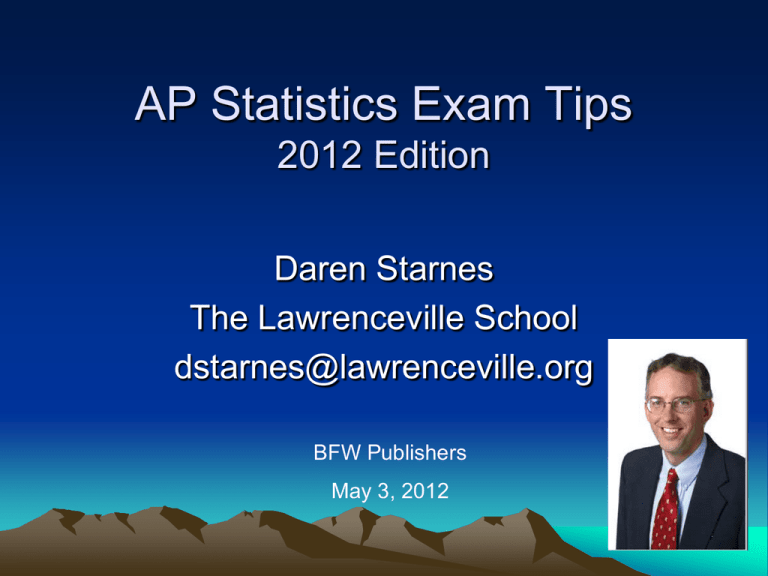
AP Statistics Exam Tips 2012 Edition Daren Starnes The Lawrenceville School dstarnes@lawrenceville.org BFW Publishers May 3, 2012 #1. Get Prepared! • Do released AP Exam MC and FR questions – Look at FR scoring rubrics from AP Central • Do practice questions from other sources – Stats 4 Stem website – AP Statistics Review books – Cumulative AP Practice Tests in TPS 4e • Review Formulas and Tables for AP Exam • Review inference procedures – Larry Green’s website – Inference summary from TPS 4e endpapers #2: Be a smart test taker! • General – – – – Get a good night’s sleep Review TPS 4e Appendix A AP Exam Tips Eat a healthy lunch Check that your calculator is working • Multiple choice section – Answer all the questions (no guessing penalty) – Cover up answers while reading the stem • Free response section – Don’t run out of time before Question 6!! – Start with questions you feel confident about – Use bullets and outlines rather than complete sentences whenever possible #3: Use technology wisely • Don’t type in data just because it’s there! • On inference questions, use STAT TESTS for calculations. Only show formulas with values subbed in for partial credit if you get the same answer! • Calculator speak = no full credit (1) Binompdf(12,.2,3) = no full credit Better: P(X = 3) = (12C3)(0.2)3(0.8)9 Minimal: binompdf with n = 12, p = .2, k = 3 (2) Normalcdf(90,105,100,5) = no full credit Better: Find z score. Then draw, label, shade Normal curve Minimal: normalcdf with lower bound = 90, upper bound = 15, mean = 100, std. dev. = 5 #4: Follow the 4-step inference process Starting in 2010, partial credit is available on 4-step rubrics. #4: Follow the 4-step inference process 2011 Question #4: High Cholesterol 2010 Question #5: Fish tales Remember: Don’t just start typing in the data unless you have a reason to do so!! #4: Follow the 4-step inference process 2011 Question #4: High Cholesterol #4: Follow the 4-step inference process 2011 Question #4: High Cholesterol #4: Follow the 4-step inference process 2011 Question #4: High Cholesterol • Don’t “accept” the null hypothesis!! #5: Don’t shoot yourself in the foot! • Misuse of term or notation mandatory deduction – Putting statistics instead of parameters in hypotheses H0 : xBR xFF – Saying there’s confounding when there isn’t – Using experiment language in an observational study Blocking vs. stratified sampling; experiment vs. survey • Advice: – Only use terms and symbols you know – It’s better to explain in your own words than to use a term incorrectly – If you’re unsure about notation, use words instead of symbols #6: Naked answer = no credit Directions: Show all your work. Indicate clearly the methods you use, because you will be graded on the correctness of your methods as well as on the accuracy and completeness of your results and explanations. 2009, Question #2 #6: Naked answer = no credit 2009, Question #2(a): 70th percentile of stopping distances #7: If you can’t answer part of a question, don’t assume you can’t answer other parts 2010 Question #4 If needed, make up a reasonable answer for the part you can’t answer… #8: Know what distribution you’re talking about! 2010 Question #2 • Distribution of sample data (lengths of 40 songs) • Population distribution (lengths of all rock-and-roll songs the station plays) • Sampling distribution of statistic (e.g. sample mean song length) #9: Don’t write too much • • • • Answer the question, then shut up! Space provided is more than enough The mandatory deduction rule The parallel solutions rule #10:RTQ & ATQ!! 2011 Question #1: The Combine #10:RTQ & ATQ!! 2011 Question #1: The Combine AP Statistics Exam Tips Recap #1: Get prepared! #2: Be a smart test taker. #3: Use technology wisely #4: Follow the 4-step inference process #5: Don’t shoot yourself in the foot! #6: Naked answer = no credit #7: If you can’t answer part of a question, don’t assume you can’t answer other parts #8: Know what distribution you’re talking about! #9: Don’t write too much! #10:RTQ & ATQ!! Questions? Email me: dstarnes@lawrenceville.org
